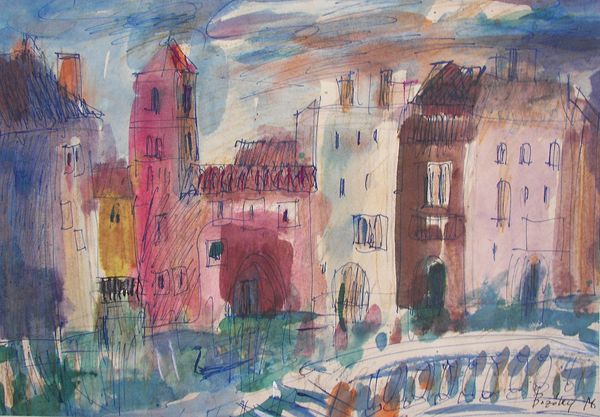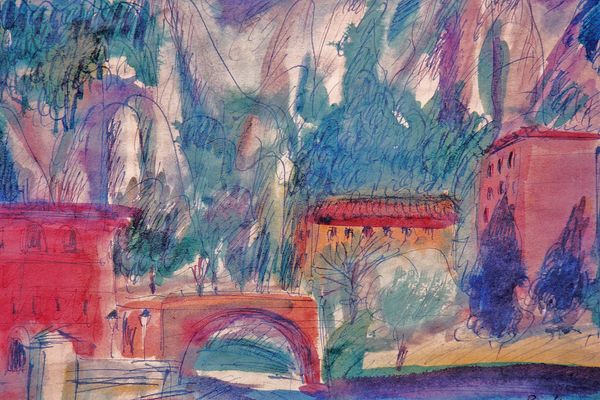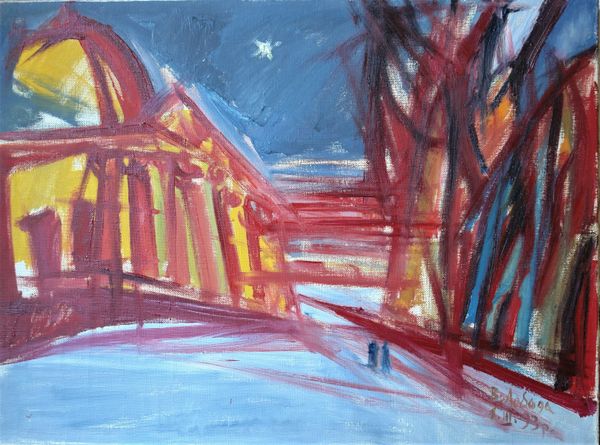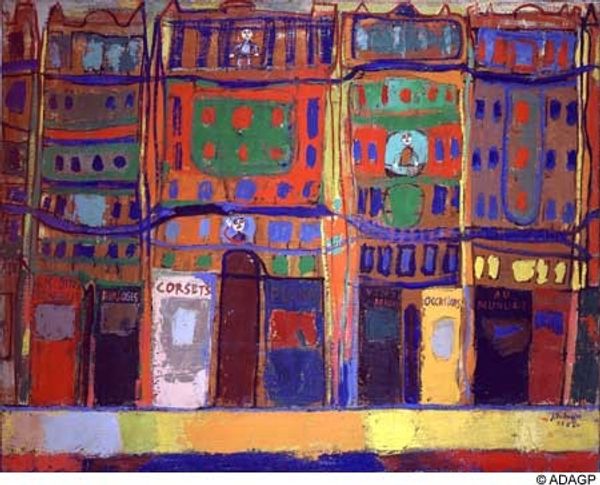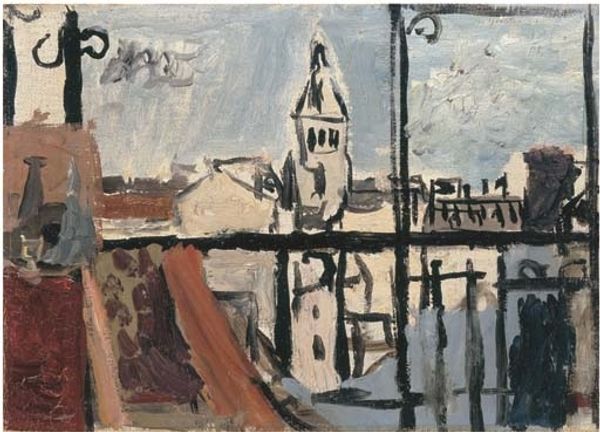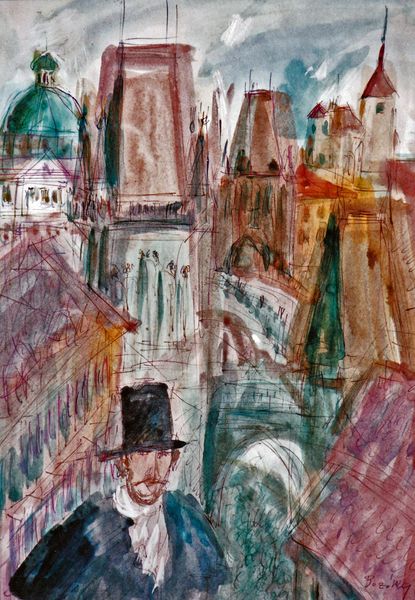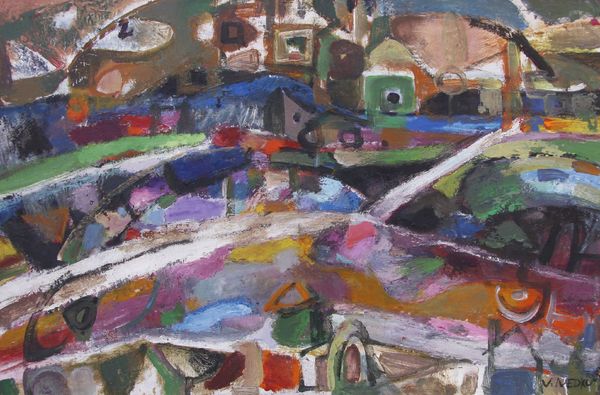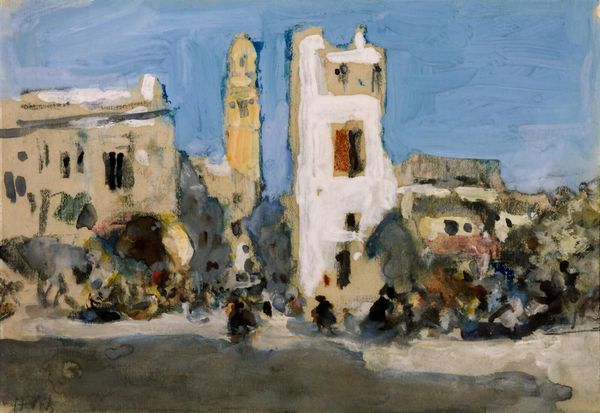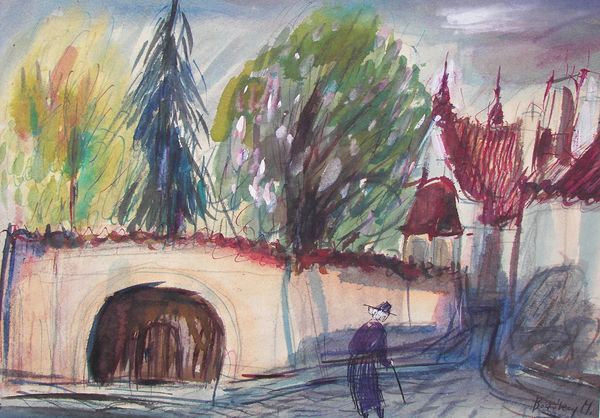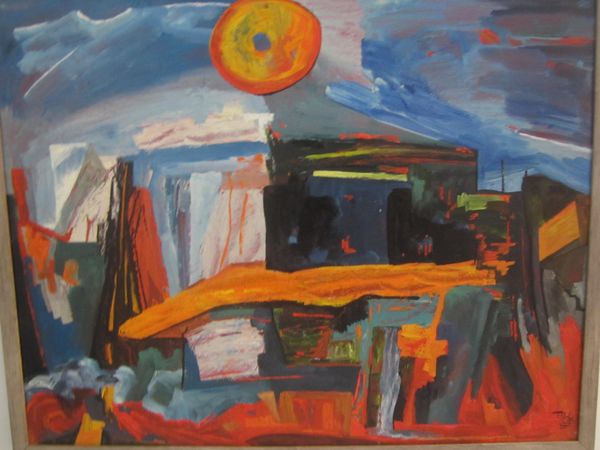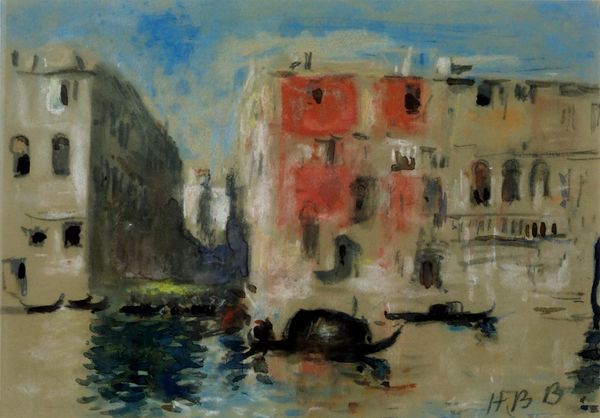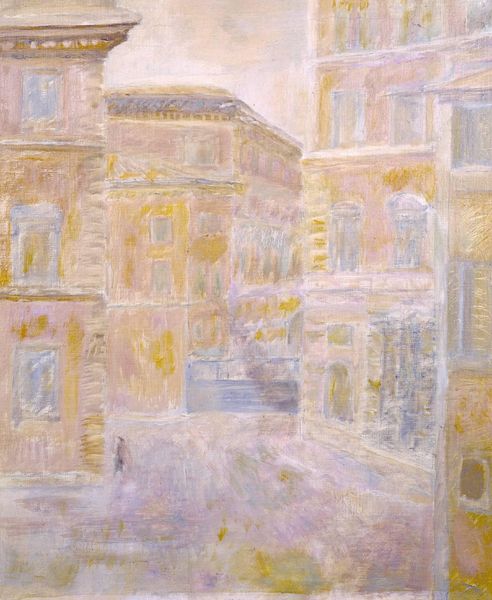
Dimensions: 50 x 60 cm
Copyright: Rudolf Láng,Fair Use
Curator: This expressive painting is Rudolf Láng's "Memory of Prague," an oil on canvas created in 1957. Editor: My immediate impression is that this painting is haunted—by history, by a certain melancholy. It’s a city dissolving into feeling. Curator: The dissolution you sense might reflect the sociopolitical realities of Czechoslovakia in the late 1950s. Consider the weight of the Soviet influence, the suppression of cultural expression, and Láng, as a Jewish man, grappling with the memory of pre-war Prague, a city later altered by conflict and ideological agendas. Editor: I see symbols of endurance here, though. The heavy impasto gives the buildings a weighty, almost stubborn presence. The blurred figures hint at fleeting lives, but the architecture persists. Even the colours speak—the dusky blues, mauves and golds convey a sense of resilience tinged with loss. Prague itself is loaded with symbolism; for centuries, it's been mythologized. Its legends and historical weight are enormous. Curator: Exactly. Láng may also be referencing Expressionism, which found ways of embodying and portraying emotional truths. There's the woman walking her dog— is she oblivious to her city, a symbol of the "everyday" citizen just existing under oppression? There is something eerie about her. Editor: Perhaps. Or maybe she just signifies life going on amidst the grand narratives. I think it is hard to ignore, though, that her dark-coloured companion might echo similar dark silhouettes found across a lot of Prague folklore and local superstition; or just a shadow of herself; or even the soul in transit. Curator: Interesting! Either way, this "Memory of Prague," is also the memory of exile, I think. It seems to blend a personal nostalgia for pre-war life, mixed with his identity struggles as part of the Jewish community, now set against a backdrop of postwar cultural upheaval. Editor: It's powerful to consider it like that. For me, "Memory of Prague" uses symbols in such a clever and multi-layered fashion. It allows you to both feel the emotional reality while still grounding the moment in universal human elements and their impact on how memory is stored. Curator: I'm glad you highlighted the personal weight inherent in that. It forces us to re-examine simplistic assumptions about postwar art and instead, focus on identity in shaping personal experiences. Editor: Indeed! Láng urges us to think more critically about cultural continuity. The work's symbolism carries on conversations.
Comments
No comments
Be the first to comment and join the conversation on the ultimate creative platform.
